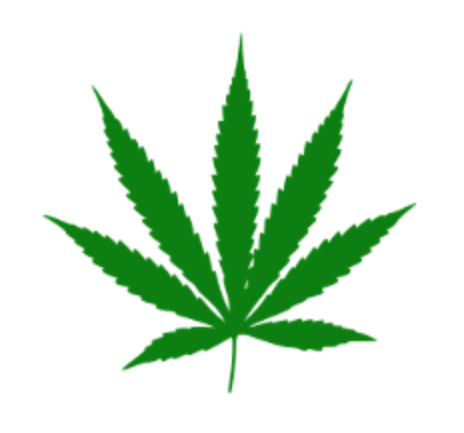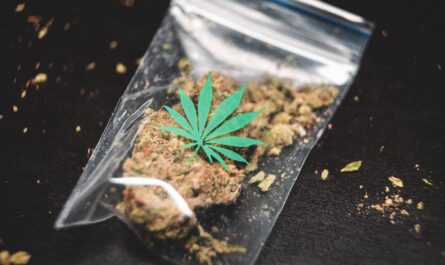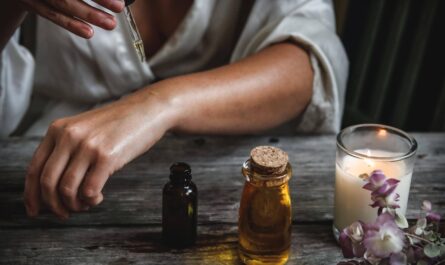This information was provided by WayOfLeaf.com
Medically reviewed by Dr. Mike Bohl Written by Nicole Richter
16 Oct, 2020
With anxiety disorders affecting up to 40 million American adults, prescriptions for varying pharmaceutical drugs are at an all-time high. However, many of these drugs induce severe side effects. As a consequence, millions of Americans seek an option for addressing some of these adverse reactions. And with medical cannabis available in many states (and in some, recreational use), it appears that cannabis may prove a viable choice.
One major problem associated with cannabis is that users feel a noticeable change in cognition or physical ability due to the presence of THC. However, there may be a way to consume marijuana while limiting THC’s intoxicating and mind-altering effects. Due to the relatively new phenomenon of microdosing, individuals may be able to consume cannabis in an effective, efficient, and responsible manner.
The Basics of Microdosing
Microdosing involves consuming minimal amounts of cannabis throughout the day. The amount is enough to feel a perceptible sensation, but not enough to cause a significant change in cognition. Before his death in 2008, Albert Hofmann, Swiss chemist, and creator of LSD, stated that microdosing would become the most critical area of psychedelic research. And since then, many scientists have seemingly agreed – even if the concept has been somewhat slow to catch on.
For example, according to Michelle Ross, PhD, (founder of the IMPACT Network), relatively few people even know about microdosing. Instead, they continue to use abundant amounts of high-THC cannabis. This is often the result of the assumption that when mitigating specific medical symptoms, more is better. As it goes, though, an increasing body of medical research is suggesting quite the contrary; when it comes to cannabis, less, in fact, can often be more.
In a 2012 study by Portenoy et al., 263 cancer patients completed a five-week study. Each group received daily doses of nabiximols, a synthetic THC/CBD compound. Patients received either low doses (1-4 sprays), medium doses (6-10 sprays), or high doses (11-16 sprays). The study found that the low and medium groups experienced the most pain-relieving effects.
Traditionally, microdosing is most commonly associated with LSD and other psychedelics. However, medical experts now believe that similarly, lower THC doses in cannabis may be beneficial for a wide range of medical patients. According to Dr. Dustin Sulak, a physician specializing in cannabis medicine, raising THC consumption may be counterproductive, and may actually lead to diminished health benefits. He stated that in some cases, cannabis can sometimes cause anxiety rather than subdue it.
Benefits of Microdosing
Microdosing can lead to different outcomes depending on a person’s needs and lifestyle. For instance, some may discover that microdosing enables them to be more productive while still maintaining a clear mind. For others, it could be a method of releasing stress and tension.
To summarize, here are several potential benefits of microdosing cannabis. Of note, these are potential benefits – the actual effects may differ from person to person. Also note that no clinical studies have been carried on the effects of microdosing for the below conditions:
Pain Relief & Inflammation Reduction:
Small amounts of THC can activate the endocannabinoid system, which may lead to pain-relieving benefits without an overly intoxicating high.
Nausea:
Small doses of cannabis may also mitigate nausea symptoms. Numerous chemotherapy studies have shown that marijuana may help decrease the feeling of nausea and offer patients relief.
Insomnia:
Marijuana is a popular choice among many users for assisting with insomnia. However, those interested in completing daily tasks may find themselves facing drowsiness and tiredness. Microdosing may benefit users by providing relaxation and inducing deep, natural sleep patterns without excessive feelings of grogginess.
How Does Microdosing Help Anxiety Specifically?
Relating to stress and anxiety specifically, the use of cannabis appears to have biphasic effects. This means that in low doses, THC can objectively help to decrease stress levels. In higher doses, however, it appears to often do the opposite.
In fact, researchers from the University of Chicago and the University of Illinois suggest that the effects of cannabis (THC) are highly dose-dependent. In a study carried out by teams from both universities (see link above), it was observed that low doses of THC helped to reduce nerves during a public speaking task. At higher doses, however, test subjects actually experienced increased levels of anxiety.
In a 2015 publication in Neurotherapeutics, researchers observed that microinjections of CBD into the DPAG (midbrain dorsal periaqueductal gray) region of the brain – an area that is “integral to anxiety” – produced anxiolytic (anxiety-relieving) effects. In the publications concluding statement, researchers claimed that “preclinical evidence conclusively demonstrates CBD’s efficacy in reducing anxiety behaviors relevant to multiple disorders, including PTSD, GAD, PD, OCD, and SAD.”
Similarly, an interesting 2015 study published in the European Journal of Pharmacology observed that microinjections of CBD into the substantia nigra region of the brain (a basal ganglia structure), produced panicolytic effects. “Panicolytic” is a term referring to reduced flight instinct in animals that encounter a dangerous fight-or-flight situation. Authors of this study suggested that cannabidiol microinjections may function to modulate “panic-like defensive behaviour.”
Are There Any Disadvantages of Microdosing Cannabis?
In short, microdosing cannabis may offer maximum benefit from a minimum dose. Not only do consumers limit psychoactivity, but they may also aid their symptoms. It is also cost-effective. Experienced smokers, however, may find it challenging to adopt – and follow – consistent moderation.
Ultimately, the biggest challenge is simply finding the dose that works. Various Internet articles may calculate a generic dosage, but in reality, the best quantity varies from person to person. For example, while two milligrams may be right for one person, it may be entirely ineffective for others.
Here is one way someone could consider trying out microdosing, but it is not the only way to do it. Users could consume one mg of THC, abstain for two days, and then consume one mg of CBD on day three, preferably via an oil tincture to make accurate measurements.
To ensure maximum health, comfort, and safety, users can check their responses to the following questions:
- • Is it easy to breathe?
- • What is the current level of calm or comfort?
- • Is it easy to generate a genuine smile?
Users should then grade each answer on a scale of 1-10. After scaling the answers, users can then consume the cannabis, wait 45 minutes, and grade the three answers again. If there’s no change in the scores, they should increase the dosage by one mg.
Users should repeat these steps until their scores change. When they vary significantly, they may likely have discovered their minimum effective dose or personal cannabis threshold. Finally, they should increase the amount until there is no further improvement in their symptoms.
Microdosing Consumption Methods
In general, there are three main dosing methods:
Edibles:
This is a good option for non-smokers and is easy to measure. However, users should note that edibles’ impact is gradual – unlike smoking, which may have an almost immediate effect.
Smoking:
While this is the classic consumption method, it is the worst choice for microdosing because it’s challenging to measure precisely.
Vaporizing:
This is a better option than smoking, as users can get an accurate reading on dosing. There are many vape liquids on the market, and vape kits users can purchase to get started.
What Are The Best Microdosing Cannabis Strains?
Microdosing has not been well studied, so it is impossible to say what the best strains are for it. However, a suggestion is to use sativas with a reasonable CBD level to counteract the effects of THC. Sativas are known to be the best cannabis strains for providing an uplifting experience. Here are five excellent options:
1 – Tsunami Crush
With an almost even ratio between THC and CBD (11%), Tsunami Crush is a potent sativa cross between Sour Diesel and NYC Diesel. It’s one of the finest medicinal marijuana strains around, and it creates a slow but potent change in cognition if an individual consumes too much.
2 – Pineapple Thai
This rare 100% sativa cannabis strain – known for its pleasant sweet, tropical pineapple aroma and sweet/spicy taste on exhalation – has 5% CBD and up to 24% THC. Users should maximize its phenomenal health benefits through microdosing.
3 – Kaua’i Electric
This is another pure sativa strain that’s native to the Hawaiian islands. It has a THC level of up to 18% and a typical CBD content of 4% – users can have an intense experience with this strain. The best place to find high-quality Kaua’i Electric in its natural realm is on the Powerline Trail, located close to Hawaii’s famous Mount Wai’ale’ ale.
4 – Pinetrak
This sativa is a cross between Mexican and Thai sativa strains. It is a potent cannabis strain with up to 21% THC, though the 4% CBD may work to limit the high that is experienced. Pinetrak is noted for its ability to give users a rush of energy and creativity.
5 – Happy Hiker Haze
With a THC content of 22% against just 2% CBD, Happy Hiker Haze is a marijuana strain capable of giving users a rapid, euphoric feeling that can often result in joyous laughter. If users microdose it, though, they may feel relaxed and happy for the entire day.
Final Thoughts on Microdosing Cannabis for Anxiety
Microdosing isn’t widely known, but it may have advantages. Users potentially experience some of the beneficial effects of cannabis without the intense psychotropic effects. Users willing to try microdosing in an area where medical marijuana is available may have some surprising results. In fact, even seasoned smokers have reported a positive impact on symptoms.
If you want to obtain your PA or NJ medical marijuana card so you can medicate responsibly,
schedule an appointment with us




